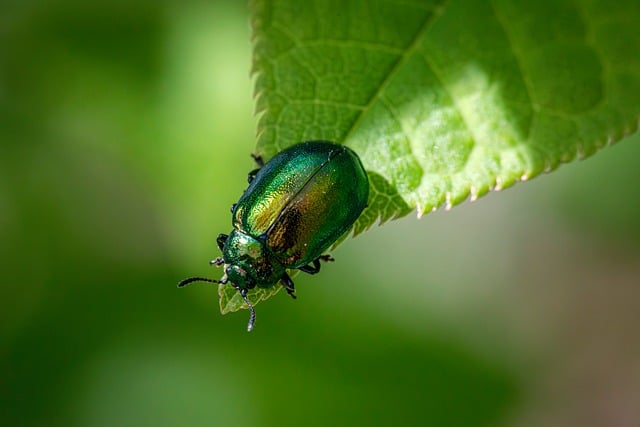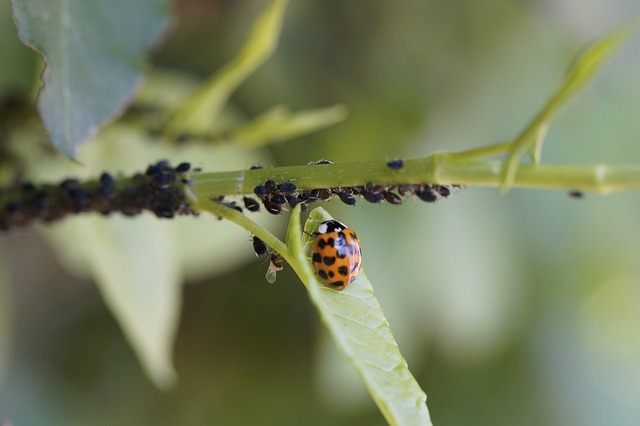In Littleton, homeowners should be vigilant against both termites and spiders. To spot termite damage, look for wood deterioration, cracks, peeling paint, or warped doors/windows. Termite droppings near entry points are another sign. Regular inspections and swift action are key to preventing costly repairs. For spider infestations, identify common species like the house spider and American house spider through their distinct appearances and behaviors. Confirming an infestation requires examining structures for mud tubes, damaged wood, or weakened areas. Effective treatment plans combine non-chemical and chemical solutions for both termites and spiders, ensuring Littleton homes remain protected.
Are you concerned about termites or spiders invading your Littleton home? This comprehensive guide provides insights into these common pests. First, we demystify termite infestations, outlining signs and potential damage. Then, we shine a light on the most prevalent spider species in the area, detailing their behavior. Finally, discover effective termite treatment plans tailored for your home, offering peace of mind against both insects. Learn how to identify a spider infestation early using our practical tips and protect your Littleton residence from unwanted visitors.
- Understanding Termite Infestations: Signs and Damage
- Common Spider Species in Littleton and Their Behavior
- Effective Termite Treatment Plans for Your Home
Understanding Termite Infestations: Signs and Damage

Termite infestations can go unnoticed for years, making them a silent threat to your home’s structural integrity. The first step in effective termite control is recognizing the signs early on. In Littleton homes, spider infestations often present unique challenges, as these insects tend to hide within walls and floorboards, making their presence hard to detect visually. However, there are specific symptoms that indicate an issue. Look for damaged wood, which may appear hollow or have visible cracks, indicating termite tunnels. Peeling paint or warped doors and windows are also red flags. Termites leave trails as they forage for food, so keep an eye out for small piles of discarded wing bits near entry points like doors or windows.
Regular inspections by professionals are crucial in identifying these signs early. If you suspect a spider infestation, act swiftly. These insects can cause significant structural damage over time, leading to costly repairs. Understanding the behavior and telltale signs of termite activity empowers homeowners to take proactive measures, ensuring the longevity and safety of their properties.
Common Spider Species in Littleton and Their Behavior

In the vibrant, bustling city of Littleton, homeowners often encounter various spider species as part of their urban landscape. Identifying common spiders and understanding their behaviors is crucial when it comes to recognizing a potential infestation in your home. One of the most well-known arachnids in this area is the house spider (Tigrisida spp.), known for its web-building habits and tendency to inhabit spaces like attics, basements, and dark corners. These spiders are typically brown or tan with distinct markings, and their webs can range from chaotic to highly organized.
Another prevalent species is the American house spider (Parsteatoda tepidariorum), easily recognized by its large size and striking appearance. Unlike some other spiders, they prefer open spaces rather than intricate webs. Common places to find these spiders include window sills, corners of rooms, and areas with poor lighting. Their presence may indicate a larger infestation, as they are social creatures that often live in groups. Knowing how to identify these species and their habits is essential for Littleton residents looking to prevent or address spider infestations in their homes.
Effective Termite Treatment Plans for Your Home

In the quest to safeguard your Littleton home from unwelcome visitors, understanding effective termite treatment plans is paramount. The first step is identifying a potential infestation, which often starts with recognizing telltale signs such as mud tubes along foundations or wooden structures showing damage. Homeowners should also be vigilant for swarms of termites or weakened, bent walls and floors. Regular inspections by professionals are crucial, especially in areas prone to termite activity.
Once an infestation is confirmed, tailored treatment plans come into play. These typically involve a combination of non-chemical and chemical solutions. Non-chemical methods focus on eliminating access points and sources of moisture that attract termites. Chemical treatments, such as termiticides, target the insect population directly, ensuring a more comprehensive approach to eradicating the problem at its root. Implementing these strategies not only protects your property but also prevents future invasions, ensuring peace of mind for Littleton residents.
In addressing pest control, especially concerning termite infestations and spider populations in your Littleton home, knowledge is power. Understanding the signs of an infestation, as outlined in this article, allows for prompt action using effective treatment plans. For termites, various methods exist, from non-chemical treatments to traditional chemical applications, each tailored to specific needs. Similarly, recognizing common spider species and their behaviors equips you to choose appropriate measures, be it DIY solutions or professional interventions. By staying vigilant and utilizing the right tools, you can maintain a safe, pest-free environment in your Littleton home.
